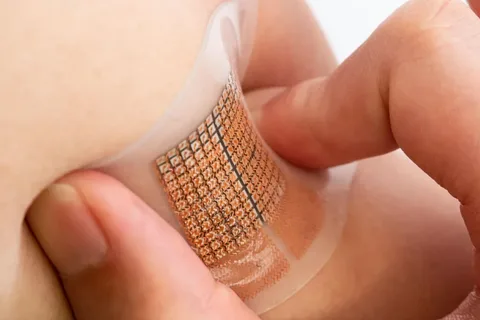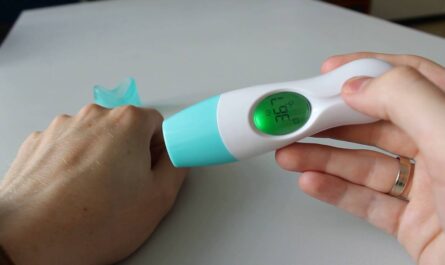The wearable patch market comprises a variety of low-profile, lightweight adhesive patches that can be worn on the body to continuously monitor vital signs and other health data. Wearable patches track a range of biometrics, including heart rate, ECG, blood pressure, blood oxygen levels, temperature, and more. The data is transmitted wirelessly via Bluetooth to a paired smartphone or other device. Compared to bulky wearables like smartwatches and fitness trackers, patches provide discreet and comfortable health tracking through their patch-like form factor. Growing awareness of preventative healthcare and concerns over chronic conditions are driving demand for continuous monitoring via wearable patches. The Global Wearable Patch Market Size is estimated to be valued at US$ 6.43 Bn in 2024 and is expected to exhibit a CAGR of 13% over the forecast period 2024 to 2031, as highlighted in a new report published by Coherent Market Insights.
Market key trends:
One of the major trends in the wearable patch market is the integration of multiple sensors within a single patch. Early wearable patches tracked only one or two biometrics, but advances in miniaturized sensors and flexible electronics have allowed patches to incorporate arrays of sensors. Multi-sensor patches can concurrently monitor vital signs like ECG, heart rate, respiration rate, skin temperature as well as biomarkers for conditions like diabetes and cardiovascular disease. This comprehensive health data capture facilitates early detection of health issues and remote patient monitoring. Another notable trend is the development of smart skin patches designed for therapeutic applications beyond monitoring. Patches are in research and development for drug delivery, wound care, pain relief and more, representing an expansion of functionality beyond diagnostics.
Porter’s Analysis
Threat of new entrants: The threat of new entrants in the wearable patch market is moderate as the market requires high investment. However, new technologies and innovations are continually emerging providing opportunities.
Bargaining power of buyers: Buyers have moderate bargaining power due to the availability of various product alternatives from different brands. Buyers can negotiate on pricing and purchase large volumes to avail better deals.
Bargaining power of suppliers: The bargaining power of suppliers is moderate. Suppliers of raw materials have differentiation in technology and quality of ingredients they provide.
Threat of new substitutes: The threat of substitutes is low to moderate as wearable patches provide convenience and tracking abilities not easily substitutable. New technologies like smartwatches and fitness bands pose some threat.
Competitive rivalry: The competitive rivalry in the market is high with the presence of global as well as regional players competing on the basis of technologies, innovations, and pricing.
Key Takeaways
The global wearable patch market is expected to witness high growth.
Regional analysis comprises The North American region dominates the wearable patch market and is expected to grow at a high CAGR during the forecast period. Factors such as high disposable income, growing ageing population, increasing incidence of lifestyle diseases, and well-established healthcare infrastructure are driving the market in North America.
Key players operating in the wearable patch market are Diageo plc, Brown-Forman, Pernod Ricard, Bacardi Limited, Suntory Holdings Limited, Asahi Group Holdings, Ltd. Key players are focusing on new product launches, collaborations, and partnerships to expand their geographic presence and product portfolios. For instance, in October 2021, Diageo collaborated with Tapestry to develop a smart patch sensor for monitoring alcohol consumption.
*Note:
1.Source: Coherent Market Insights, Public sources, Desk research
2.We have leveraged AI tools to mine information and compile it



